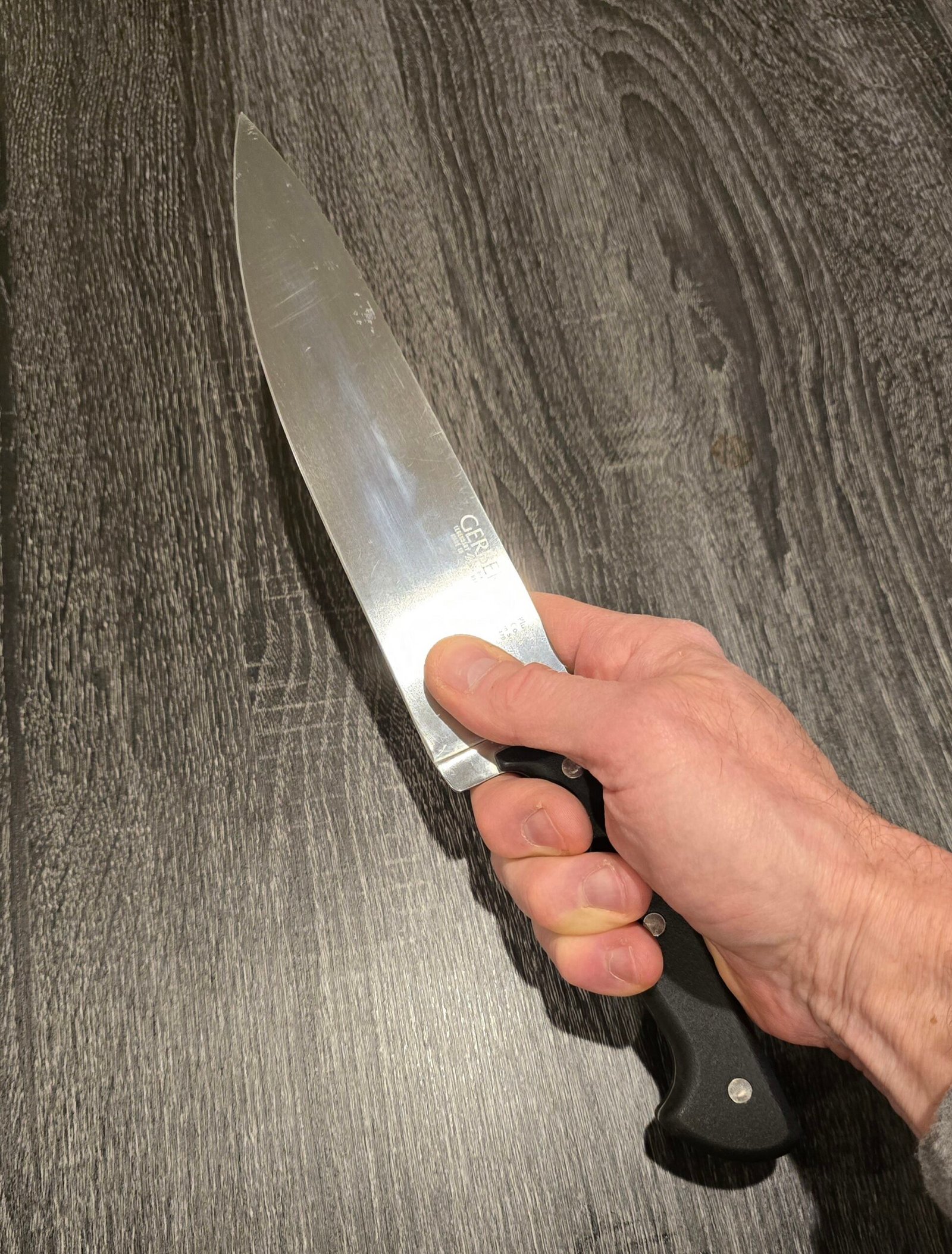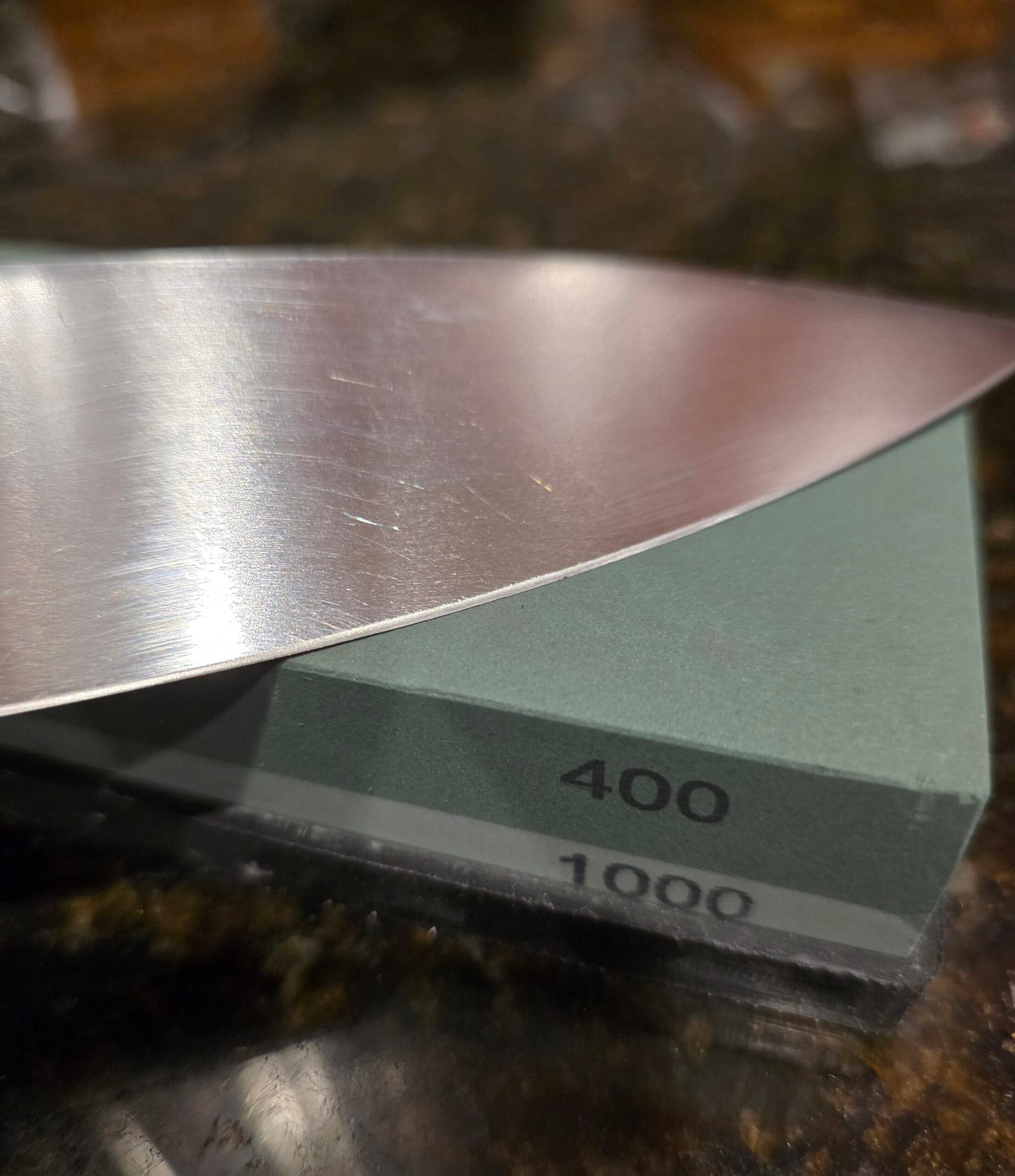Knife Skills
Knife Skills - Basic
Dr. Dan is a surgeon, not a chef. This is a basic introduction to a chef’s knife for those who are new to using one. There are many ways to use a chef’s knife, so if you have a preferred method that works for you, feel free to skip this section.
If you are new to a real chef’s knife, please read on. The basic hold is called the “pinch grip.” Place your hand on the base of the blade so that your thumb and first two fingers “pinch” the blade, and your second three fingers wrap around the handle. This is why it’s important to have a knife with a curved section below the blade/handle junction. Some knives have an abrupt, sharp edge at this point, which makes them uncomfortable to hold with the pinch grip. The pinch grip allows for better blade control when making precise cuts, such as yucca chips or thin slices of raw beets. Grabbing the entire handle is much clumsier but better for large chopping motions, such as when using a large butcher knife.
A chef’s knife’s rounded shape works best when the tip is placed on the cutting board first, and the knife is pressed down into the food to cut it. Slicing or sawing motions work best with serrated blades, like those on a carving knife. The smooth curve of a chef’s knife makes this motion easy. Stabilizing the tip and pinching the blade ensures a safe and controlled cut. A very sharp knife is safer than a dull one.

Knife Skills - Advanced
Once you are comfortable with your chef’s knife, you can try making thinner and thinner slices. Slow, controlled cuts are the safest. They will be much faster than rushing and slicing your fingers. Cutting vegetables at an angle makes them look fancier, but this requires strong control of the blade. Cutting thin slices of raw yucca requires a firm, controlled grip because the fibers are tough and will twist the blade.
All knives will dull with use and need to be sharpened. You can keep your blade sharp longer by stropping it with a leather strop at least once a week or anytime it seems dull. There are many good YouTube videos on stropping and sharpening knives. Go as far as you like, but please try to keep your knife sharp. All you need is a basic 400/1000 stone, either regular or diamond. The diamond stone will last longer, but the regular stone is less expensive.

